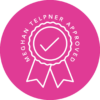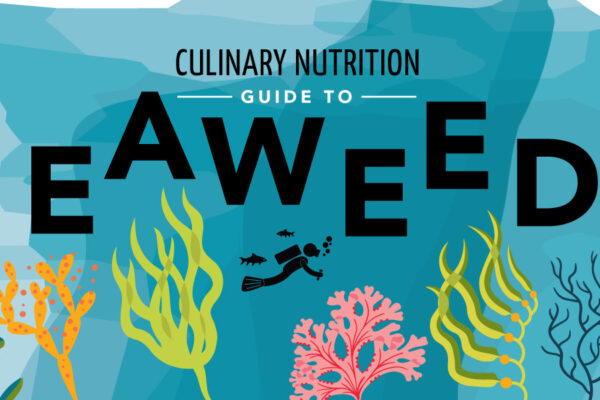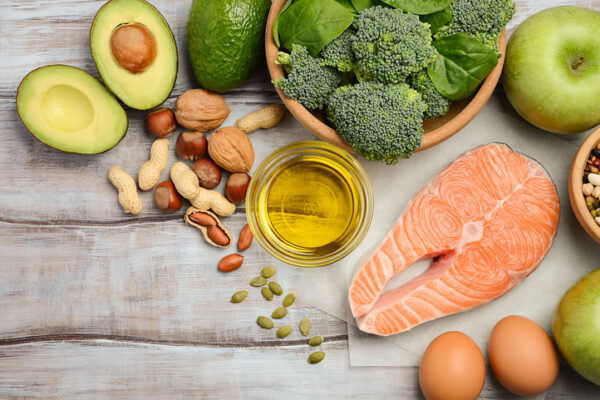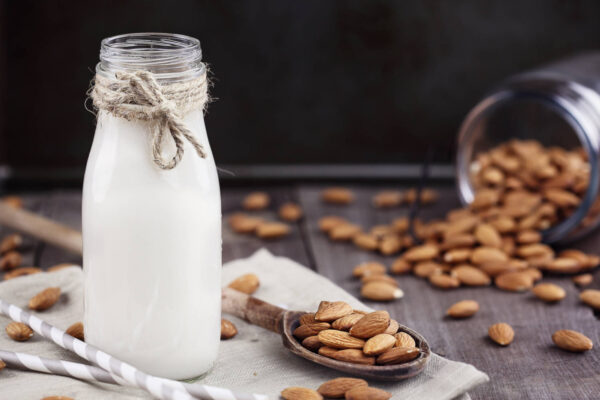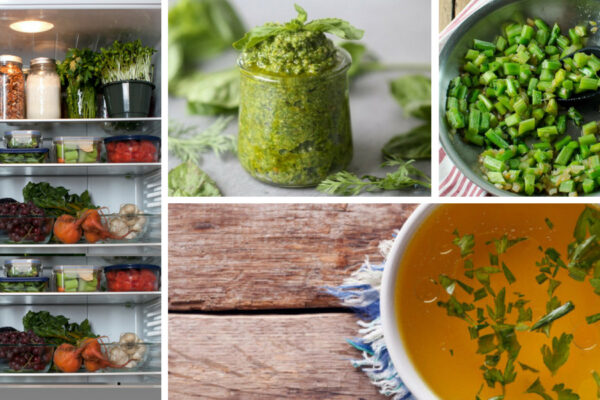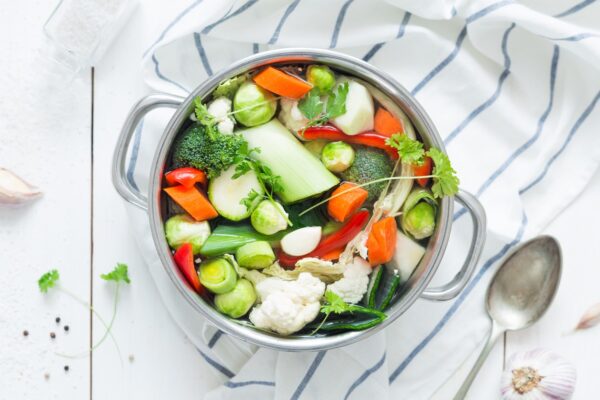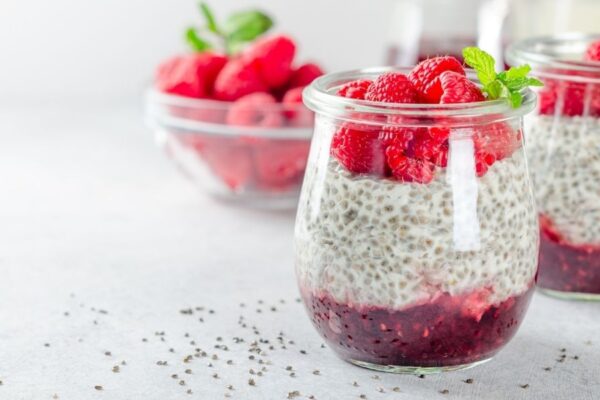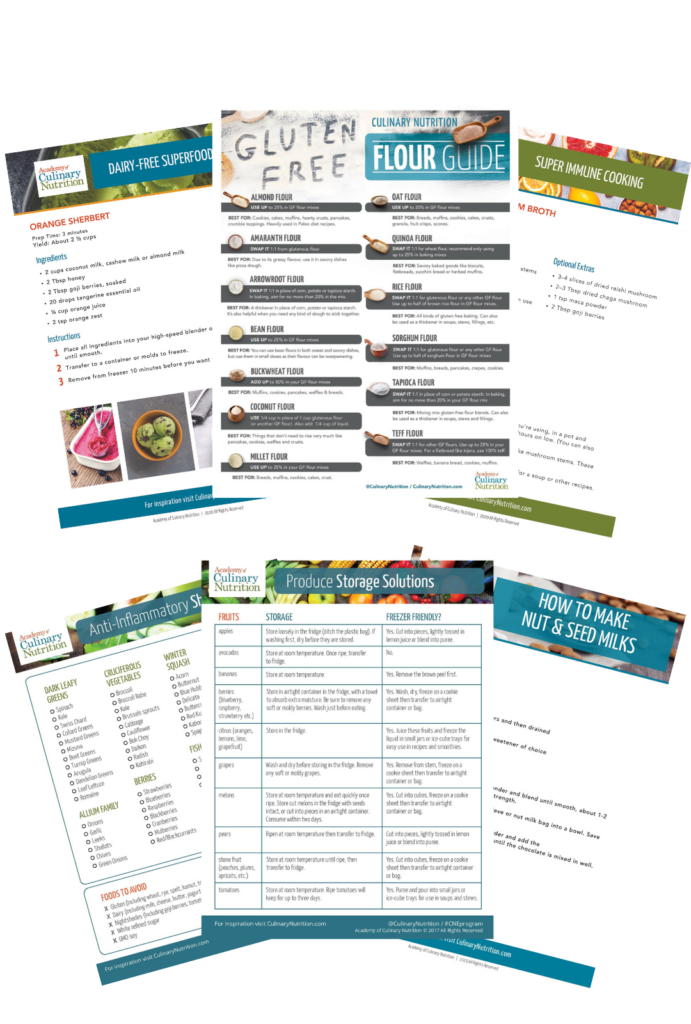Sea Moss and Irish Moss: Everything You Need To Know
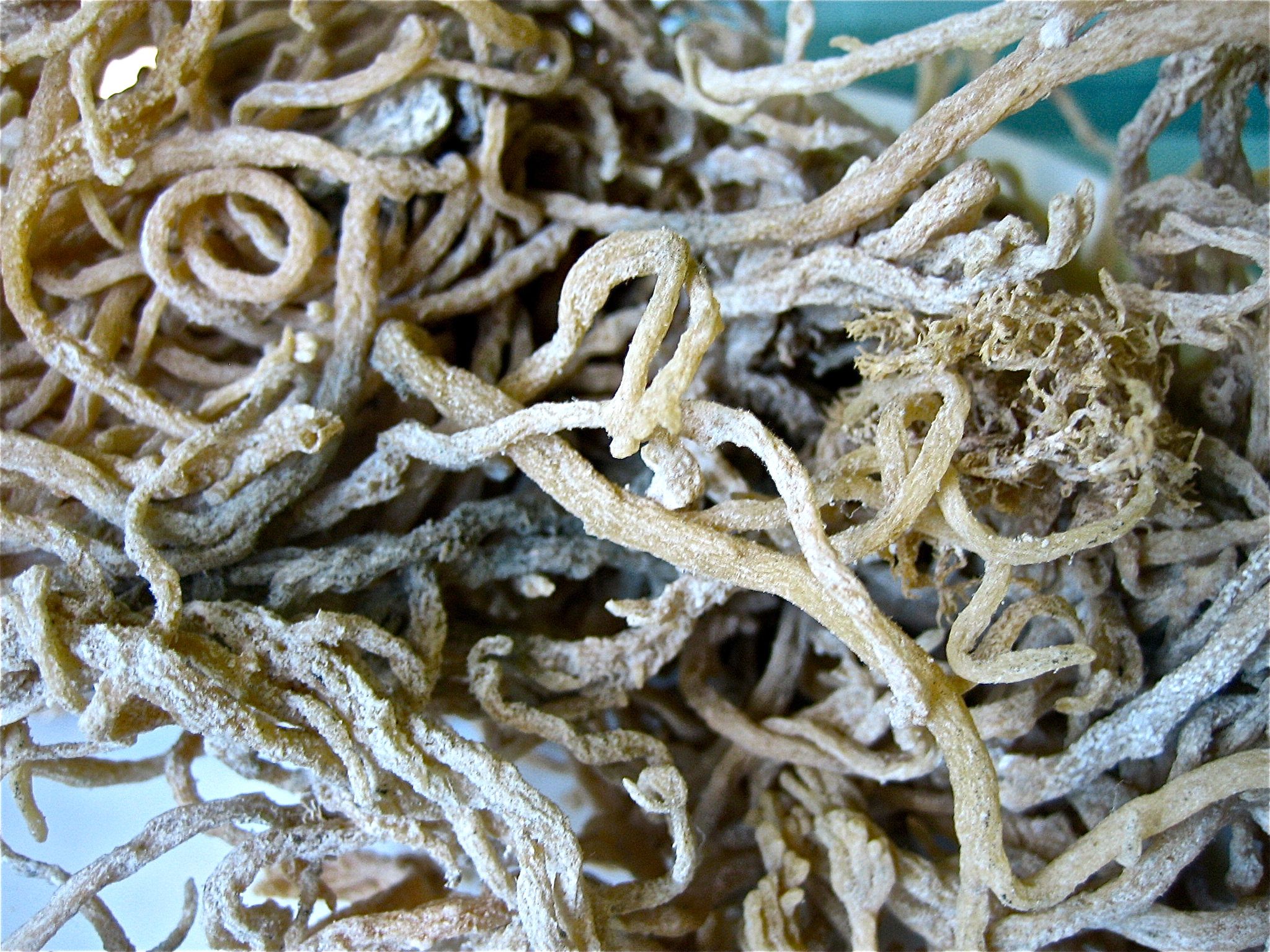
I first discovered sea moss, often referred to as Irish moss, while I was leading retreats in the Caribbean back in 2009. It was being used to thicken smoothies and milks, and even in custardy desserts. As I am a super nutrition nerd, I had to look a little more into this amazing sea vegetable.
Health Benefits of Sea Moss / Irish Moss
Sea moss, also known as Irish moss, red algae or Chondrus crispus, offers us a variety of health benefits.
Thyroid Support
DI-Iodothyronine (DIT), what T3 breaks down into, is found in abundance in brown sea moss and for this reason, it has been used as a treatment for thyroid disorders. Thyroxin (T4) and Tri-iodothyronine (T3) have been found as the main organically bound iodine compounds in several seaweeds.
Then, of course, there is the iodine, which is highly concentrated in sea moss and this is serious fuel for the thyroid. Selenium is also present in abundance and is a necessary factor in thyroid hormone production.
Mental/Emotional Health
Sea moss is jam-packed full of potassium. The cells of the body cannot function without potassium, though strangely our bodies do not have a mechanism to conserve potassium. Adding high-potassium foods like sea moss to the diet can significantly improve behaviour and mental functioning (especially for ADD children!). High potassium foods are also very helpful for fibromyalgia, moodiness, agitation, depression and anxiety disorders. Irish moss is also an excellent source of a range of B vitamins, which are well known for supporting the nervous system and reducing stress. This food is like a warm cup of tea with good book by the fire for the nervous system.
Additional evidence indicates that sea moss has a neuroprotective effect, shielding the brain from the accumulation of a protein called α-synulein that is linked to neurodegeneration and the development of Parkinson’s disease.
If all that wasn’t enough, sea moss contains algin. This phytonutrient has therapeutic value as a heavy metal detoxifying agent – meaning it helps pull heavy metals out of the tissues of our bodies.
Digestive Health
Sea moss has a mucilaginous consistency, meaning it can help act as a soothing and healing agent to all mucous membranes (great for external skin health and internal digestive tract health). Recent animal studies show that it has prebiotic effects as well, leading to an increased production of helpful short-chain fatty acids in the colon, a reduction of detrimental bacteria in the gut, and improvements in overall gut health and immunity.
Immune Support
Sea moss helps relieve and prevent symptoms of colds and flu – how perfect for the cold and flu season, but also for year-round immunity. Irish moss is a source of potassium chloride, a nutrient which helps to dissolve catarrhs (inflammation and phlegm in the mucous membranes), which cause congestion. It contains compounds which act as a natural antimicrobial and antiviral agents, helping to boost immunity and get rid of any infections. Hello natural cough syrup!
Cold, flu-like, and other coughy-mucousy conditions the moss helps with include:
- Sore throat
- Bronchitis
- Pneumonia
- Tuberculosis
- Chest coughs
In addition, Irish moss is rich in amino acids, Vitamin C and antioxidants, all of which help to boost the immune system, support immune health and prevent cellular damage and destruction. It also has anti-tumor properties.
Health Concerns About Irish Moss: Carrageenan
I love Irish moss and don’t like seeing it shed salty tears over the bad reputation it has gotten across the internet. A few years ago, a report from the Cornucopia Institute criticized food manufacturers for using carrageenan in organic foods, something they termed ‘Organic Watergate’.
Carrageenan is a food additive that can be derived or extracted from Irish moss, but it’s not the same thing as whole food sea moss. It’s often used as a thickener or stabilizer in a wide variety of foods.
The politics around carrageenan begin on page 11 of the report, but I will summarize the issues with it here:
- Carrageenan is derived from red seaweed.
- Carrageenan can be classified as low molecular weight, “degraded” carrageenan, or high molecular weight, or “undegraded” carrageenan.
- Degraded carrageenan is recognized as a carcinogen in lab animals, and is therefore classified as a “possible human carcinogen” by the International Agency for Research on Cancer. (More recent research has shown it can also be cytotoxic in human cells as well.)
- Degraded carrageenan also causes inflammation in the colon in rodents, which resembles ulcerative colitis, an inflammatory bowel disease.
- This inflammatory property of degraded carrageenan is not in dispute, especially since the medical research community has used degraded carrageenan for decades to induce acute inflammation in experimental trials conducted with lab animals, to test anti-inflammation drugs.
- Carrageenan processors claim that food-grade carrageenan sold to food processors falls entirely in the undegraded category. However, studies (including industry-funded studies) show that food-grade carrageenan is also linked to colon inflammation and colon cancer in animals.
So with the damaging effects of carrageenan, should we be avoiding Irish moss/sea moss altogether?
No, I don’t think we should – because sea moss and carrageenan are not the same thing.
Carrageenan is one active and concentrated component of the whole food that is Irish moss. And yes, there definitely are major and valid health concerns about degraded and undegraded carrageenan – which are mainly used in processed foods anyway.
To give you a few examples, we can take B-vitamin supplements that are derived from naturally occurring sources, or we can eat a cereal that contains synthetic thiamin hydrochloride (a synthetic version of Vitamin B1 that is derived from coal tar). We will gain different benefits or receive different effects from each. We can take magnesium glycinate, a highly absorbable form of magnesium, or take magnesium oxide where we may get more benefit from just eating a chunk of cement. We could run the risk of having birth defects in our babies if we take too much Vitamin A as a supplement while pregnant, but eating Vitamin A rich foods is perfectly safe as there is no way we could eat a great enough concentration of Vitamin A from whole foods to cause the harm that a single isolated component could have.
To declare that Irish moss should be avoided due to the harmful effects of chemically processed carageenan is a bit like saying we must avoid organic corn on the cob because high fructose corn syrup is toxic to the liver and leads to obesity, or to avoid white willow bark as an herb because aspirin (from which it is derived) can cause gastric bleeding, or to avoid coconuts because hydrogenated palm oil and sodium lauryl sulfate are bad for us. Comparing sea moss to carrageenan is a bit like comparing raw sheep milk cheese with cheese whiz, or fresh strawberries with strawberry Jell-O.
I have long argued in favour of the benefit of sea moss, and will continue to do so.
Nutritional research, for the most part, is not particularly helpful when it comes to the true benefits of whole foods. That’s how we get ridiculously convoluted studies on organics, and confusion over whether coffee is good or bad for us, and that omega-6 oils are heart healthy when in fact they are the exact opposite.
When it comes to food, I sincerely believe that traditional diets is the best source of information. Irish moss has been used for generations among seaside cultures as complete body nourishing tonics. I personally consumed Irish moss regularly for years as a preventative for a Crohn’s flare up, for thyroid health and to keep my internal tissues healthy, leading to healthy skin.
We can not judge the health of a whole food based on unnatural processed concentrations of its component parts. We cannot compare studies on isolated phytochemicals used in higher than natural or normal concentrations as grounds for avoiding a whole, unprocessed, nature-made food.
Granted, some people may have personal and individualized sensitivities to Irish moss, just like we can all have unique responses to any number of foods. All of the studies and articles relating to the Irish moss worries have nothing to do with Irish moss. They are about the concentration of the extracted and heavily processed carrageenan, which, as I mentioned, are not the same thing.
If you are in doubt, then please do keep it out. I only ask that you always do your own thorough research, read the information and make your own decisions. And if none of those reports make any sense, and you’re still not convinced, eat something (or stop eating it) and decide for yourself how you feel. That will always be your best measure.
If you’d like to include Irish moss in your diet, here is a video explaining simple ways to prepare it.
How To Prepare Sea Moss / Irish Moss

How To Prepare Sea Moss
- If dried: soak it for a few hours in water. Rinse away any sand that may be present.
- If fresh: clean the fresh moss of all other bits of seaweed, and wash thoroughly to remove sand and grit.
Once soaked/cleaned, you’ll want to simmer the moss in clean water until tender.
How to Use Irish Moss
Irish moss has a strong, sea-like flavour, so it’s better to start using it in small amounts and also use it in recipes where the taste will be disguised by the other flavours. Try using it in:
- Smoothies
- Dairy-free elixirs
- Blended soups
- One-pot meals and stews
- Salad dressings
- Homemade nut/seed milk
- Nut cheeses
- Raw desserts
- Chocolate
Recipes That Use Irish Moss
- The Ultimate Stress Busting Latte
- A Smoothie That Tastes Just Like My Body Butter
- Super Holiday Nog
- Most Amazing Chocolate Milk Ever!
- Chai Mocha Latte
Where To Purchase Sea Moss/ Irish Moss
For a long time, I carried this product and sold it directly. Unfortunately, after a hurricane wiped out my Caribbean supplier in 2010, and Fukushima made sea vegetables from the Pacific a questionable choice, I have chosen not to sell directly.
I recommend checking out your local West Indian grocer or looking online. You can find it on Amazon.ca here and Amazon.com here.
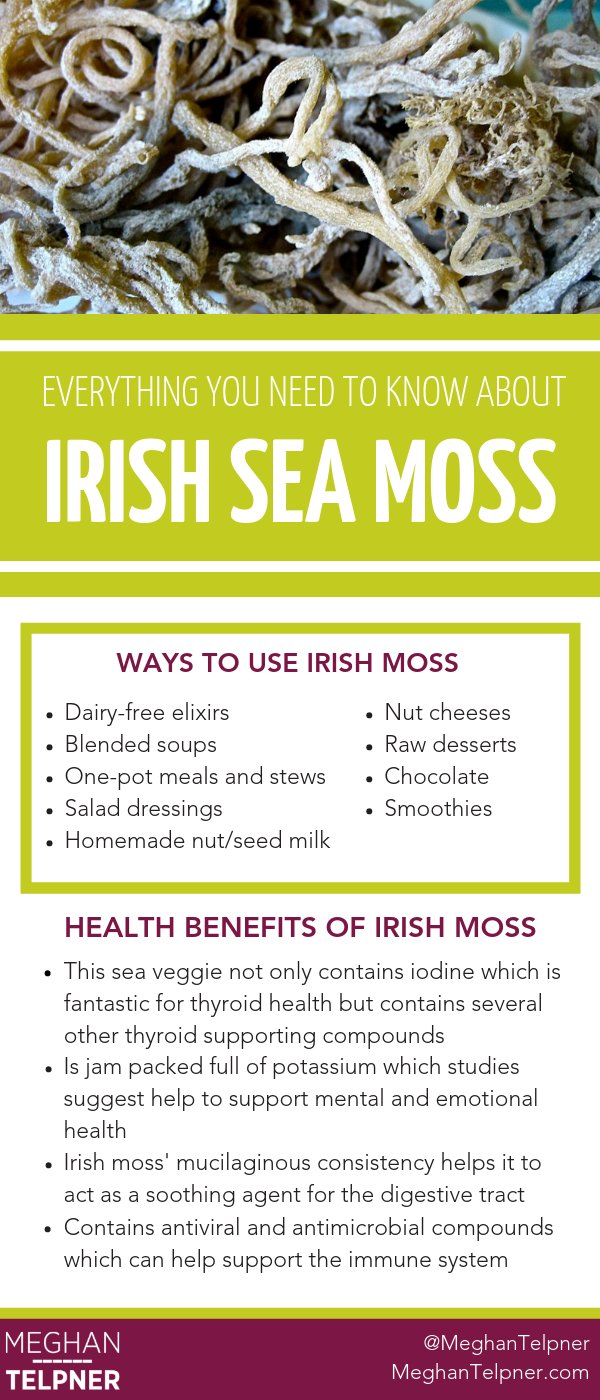
Free Resource Library
Enjoy more than 40 downloadable guides, recipes, and resources.













